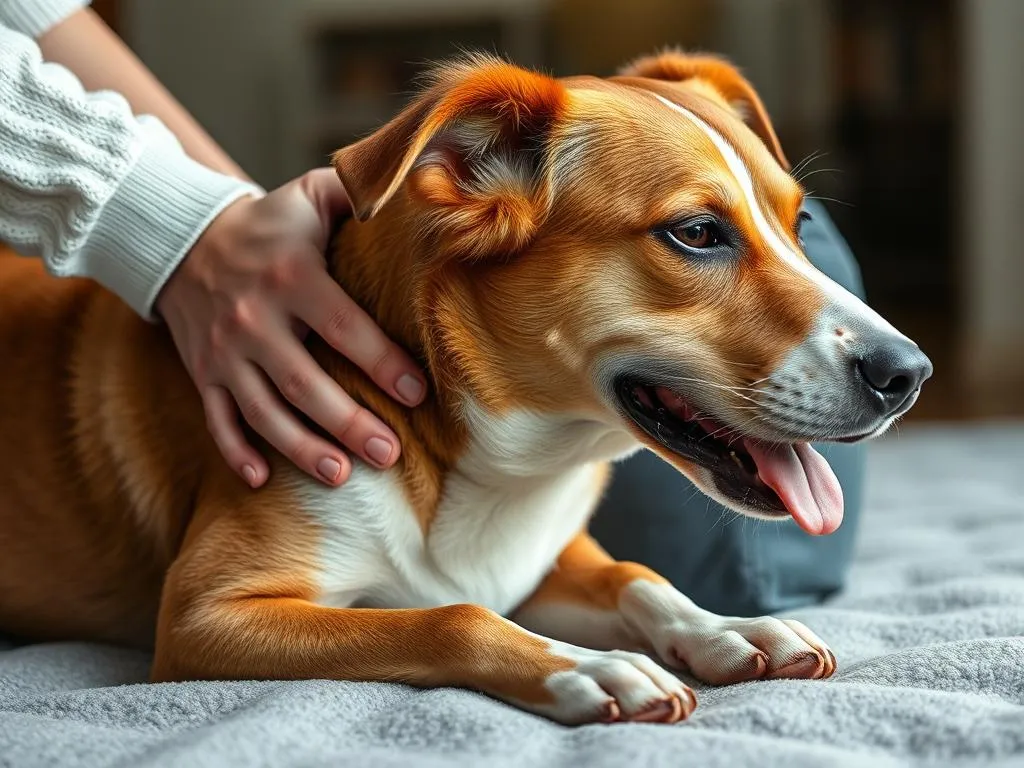
Introduction
Arthritis is a prevalent condition in dogs, affecting their quality of life and overall wellbeing. Defined as inflammation of the joints, arthritis can cause pain, stiffness, and reduced mobility. Common causes include age, obesity, genetic predisposition, and previous injuries. Understanding arthritis is essential for dog owners, as managing this condition can significantly improve their pet’s comfort and health.
Massage therapy has emerged as a beneficial complementary treatment for dogs suffering from arthritis. It can ease discomfort, enhance mobility, and promote relaxation. This article will guide you on how to massage a dog with arthritis, outlining the benefits and techniques to help your furry friend feel better.
Understanding Arthritis in Dogs
Types of Arthritis
Arthritis in dogs primarily includes:
- Osteoarthritis: The most common form, resulting from wear and tear on the joints over time.
- Rheumatoid arthritis: An autoimmune disease where the body attacks its joints, leading to inflammation and pain.
- Other less common types: These can include septic arthritis, which is caused by infection, and developmental disorders like hip dysplasia.
Symptoms of Arthritis in Dogs
Recognizing the symptoms of arthritis can help you seek therapy sooner. Common signs include:
- Lameness and limping: Dogs may favor one leg over another.
- Stiffness, especially after rest: Difficulty getting up after lying down is common.
- Difficulty in climbing stairs or getting up: This can indicate joint pain.
- Behavioral changes: Increased irritability or withdrawal from usual activities may occur.
Diagnosis and Veterinary Care
A proper diagnosis from a veterinarian is crucial for effective management of arthritis. Diagnostic tests such as X-rays and blood tests can help identify the type and severity of the condition. Treatment options can range from medications and supplements to surgical interventions, depending on the severity of the arthritis.
The Benefits of Massage Therapy for Dogs with Arthritis
Physical Benefits
Massage therapy provides several physical benefits for dogs with arthritis, including:
- Increased blood circulation: Enhanced blood flow can promote healing and reduce inflammation.
- Reduction of muscle tension and stiffness: Massage helps relax tight muscles, which can alleviate pain associated with arthritis.
- Improved joint mobility and flexibility: Regular massage can help maintain range of motion in affected joints.
Emotional Benefits
The emotional benefits of massage cannot be overlooked:
- Stress relief and relaxation: The soothing touch of massage can calm anxious dogs and reduce stress levels.
- Strengthened bond between owner and dog: Engaging in massage fosters a deeper connection between you and your pet.
- Increased comfort and happiness: A satisfied and relaxed dog is often a happier dog.
Complementary Therapy
Massage therapy works well alongside traditional treatment options. It is important to consult with a veterinarian to ensure that massage is appropriate for your dog’s specific condition and to gain insights on how best to integrate it into their care routine.
How to Prepare for Dog Massage
Creating a Comfortable Environment
A calm and quiet space is essential for effective massage. Choose an area free of distractions where your dog feels safe and relaxed. Consider the temperature: a warm space can be comforting, especially for arthritic joints.
Gathering Necessary Supplies
Before starting the massage, gather supplies to enhance your dog’s comfort:
- Towels or mats: Use a soft surface for your dog to lie on.
- Optional oils or lotions: While some oils may promote relaxation, always consult with your veterinarian before using any products.
- Tools for massage: While not necessary, some owners prefer using massage tools to help relieve tension.
Assessing Your Dog’s Comfort Level
Observing your dog’s body language is crucial. Look for signs of discomfort, such as tensing up or trying to move away. Patience is essential; gradually introduce massage, starting with gentle strokes to ensure your dog feels at ease.
Techniques for Massaging a Dog with Arthritis
Basic Massage Techniques
Understanding fundamental massage techniques will enhance the experience for both you and your dog:
- Effleurage (long strokes): Begin with gentle, long strokes along the dog’s body to warm up the muscles.
- Petrissage (kneading muscles): Use a kneading motion on areas with tension, such as the neck or shoulders.
- Friction (targeting specific areas): Apply firmer pressure to specific joints or sore spots to relieve tension.
Target Areas for Dogs with Arthritis
Focus on massaging the following areas:
- Joints: Concentrate on hips, knees, and elbows, using gentle pressure.
- Muscles surrounding affected joints: Soothe tight muscles that support the joints.
- Spine and lower back: Gentle strokes along the spine can alleviate tension and promote relaxation.
Step-by-Step Guide to a Massage Session
Follow these steps for an effective massage session:
- Duration of massage: Start with 5-10 minutes, gradually increasing the time as your dog becomes more comfortable.
- How to start and finish the session: Begin with gentle strokes and gradually increase pressure. Finish with soothing strokes to help your dog relax.
- Monitoring your dog’s response throughout: Watch for signs of discomfort or enjoyment, and adjust your technique as needed.
Safety Precautions and Considerations
When to Avoid Massage
Certain conditions warrant caution or avoidance of massage:
- Signs of severe pain or injury: If your dog shows signs of acute pain, consult your veterinarian before attempting massage.
- Specific conditions that contraindicate massage: Conditions like fractures or severe infections should be evaluated by a professional.
Consulting with a Professional
Consider working with a certified canine massage therapist, especially if you’re unsure of the techniques or your dog’s condition. Professionals can provide guidance tailored to your dog’s needs and ensure safety during massage.
Monitoring Progress
Keep track of your dog’s condition over time. Note any improvements or changes in their mobility or behavior. Adjust your massage techniques based on your dog’s responses and consult with your veterinarian regularly.
Additional Care Tips for Dogs with Arthritis
Diet and Nutrition
A balanced diet is vital for dogs with arthritis. Consider the following:
- Importance of a balanced diet: Ensure your dog receives essential nutrients for joint health.
- Supplements that may help: Consult your veterinarian about glucosamine, omega-3 fatty acids, and other supplements that may benefit arthritic dogs.
Exercise Recommendations
Regular, low-impact exercise is crucial for maintaining mobility in arthritic dogs. Recommendations include:
- Types of low-impact exercises: Activities like short walks or swimming can be beneficial for joint health without causing strain.
- Importance of regular, gentle movement: Consistent movement helps keep joints flexible and muscles strong.
Other Therapies
In addition to massage, consider these complementary therapies:
- Acupuncture and physical therapy: These can provide relief and improve mobility for dogs suffering from arthritis.
- Hydrotherapy and its benefits: Water-based exercises can reduce stress on joints while promoting movement and strength.
Conclusion
Massage therapy can be an invaluable tool in managing arthritis in dogs. By understanding the condition, preparing appropriately, and applying the right techniques, you can help your furry friend live a more comfortable and fulfilling life. Regular massage can enhance their emotional wellbeing and strengthen the bond between you and your pet. Always remember to consult with your veterinarian to develop a personalized care plan that incorporates massage and other necessary treatments.









